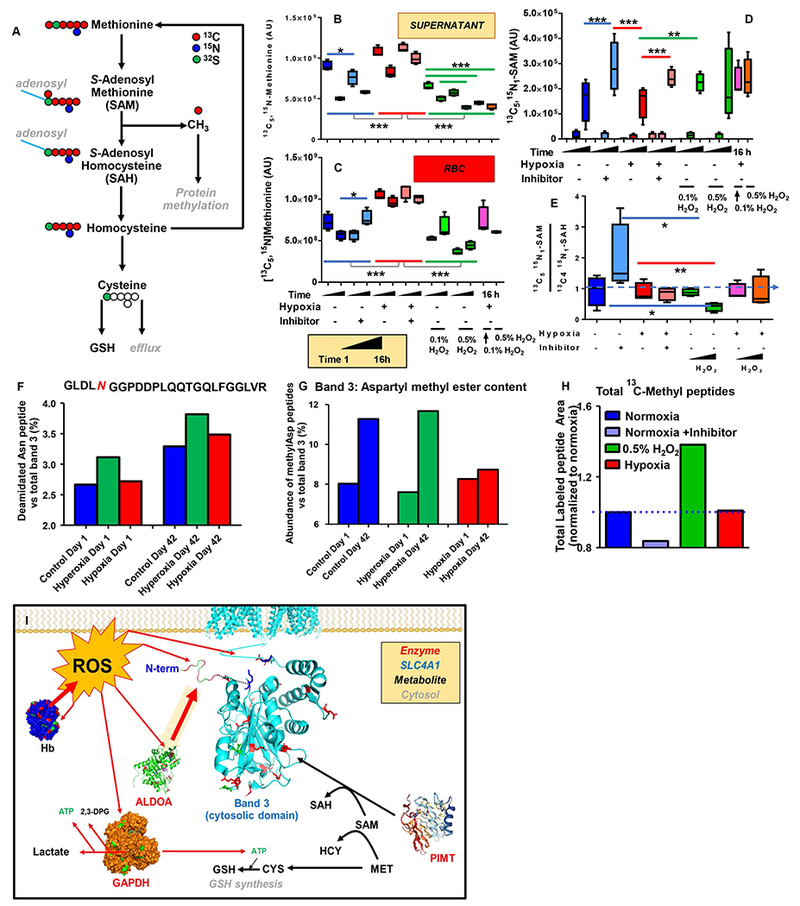Figure 7 – [13C5,15N]methionine tracing experiments (A) were performed in fresh human RBCs, stored at 4°C for 0, 1 and 16h under normoxic or hypoxic condtions, in presence or absence of the methyltransferase inhibitor adenosine dialdehyde.

Additionally, RBCs were exposed to H2O2 (0.1% and 0.5%) under normoxic or hypoxic conditions for 1 to 16 h (time course). Hypoxia decreased methionine uptake (B) and consumption (C), respectively, while an opposite effect was observed in response to H2O2. Inhibition of methyltransferases decreased methionine consumption and labeled S-adenosylmethionine (SAM) consumption (D). Labeled SAM/SAH ratios were increased in response to the inhibition of methyltransferases, while these ratios decreased in normoxic RBCs exposed to H2O2 (E). Asterisks in panels B-E indicate significance by ANOVA with Tukey post-hoc test for multiple column comparisons (* p< 0.05; ** p < 0.01; *** p < 0.001). Relative quantitation of a representative deamidated (F) and total deamidated → methylated peptides (G) in the N-term of band 3 in RBCs stored under normoxic, hyperoxic (SO2>95%) or hypoxic conditions (SO2<5%) at storage day 1 and 42. In H, fold changes of total 13C-methyl-D labeled peptides (peak areas normalized to normoxic RBCs) in normoxic RBCs (+/− methyltransferase inhibitor – dark/light blue, respectively), hydrogen peroxide (0.5% - green) and hypoxia (red) upon 16h incubation with [13C5,15N]methionine (1 mM). In I, a summary of the model proposed here.
